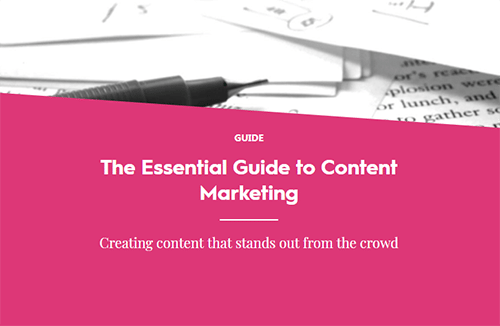When it comes to B2B offerings, it can feel like writing copy for your website is a nightmare. Having written copy for a huge variety of businesses, I can hear the objections now – they’re even thoughts I’ve had a few times myself. A classic would be…
“This is boring – why would anyone want to read about it?”
While issues like this one are real and need to be overcome, these concerns – and many others in the field of B2B marketing – can be eased with a simple thought exercise.
Businesses are not your audience
Yes, your offering is B2B but ultimately a business doesn’t read content. Yes, the decision to take on your services might be made at the board level of a business but a business doesn’t perform a Google search to find your services.
What I’m trying to illustrate here is that your content – whether it’s on-page SEO content, a blog article or a whitepaper – isn’t for a business. Not really. It’s for a person. That person works for a business, but they’re still a person.

Even when we’re making decisions in our professional lives, we don’t become automatons. We don’t become the physical embodiment of the business as a whole. We remain a person.
That’s the big secret. B2B content is, in many ways, an illusion – because behind every B there’s a C.
Practical implications of this understanding
All seems very conceptual doesn’t it? Let’s talk about what this means for us content creators in the real world.
First and foremost, it puts the focus back on the user. If you’ve read any of my previous blogs about copywriting and content marketing then you’ll have heard this before. Successful content is written with the reader in mind.
We know we’re writing for a person who sits within the kind of business we want to acquire. How that person relates to the decision-making process might change depending on the kind of content we’re writing – we might be trying to talk to the person who actually makes the final decision, or we might be talking to someone further down the chain. An influencer or initial researcher, for example.

How this impacts your B2B copywriting
Now we know that our reader is a person, rather than an organisation, we can start to make all the kinds of assessments we’d make of a B2C prospect.
- What are their questions?
- What are their challenges?
- What are their pain points?
Now, rather than writing over-formalised copy that tries to speak to the poorly defined impression of what your target business looks like, we can look at writing content that speaks to the people within those organisations.
That means content that tackles their common questions and gives them the answers they’re looking for, that acknowledges their challenges and helps them understand how you can help, that understands their pain points and how those relate to their work – and how you can provide the solution that’ll make their day easier.
So am I saying B2C and B2B content are the same thing?
Nope.
The questions, challenges and pain points we experience in our professional lives aren’t the same as those in our personal lives. That’s why the solutions are different – that’s why the divide between B2B and B2C exists.
The important thing to remember here is that, in both cases, content is trying to talk to people. Those people might be in different frames of mind, or might come to us at different points in their daily lives, but in the end they are still people – and, if you want to succeed, your content needs to treat them as such.
Let’s talk about B2B copywriting
At Coast, we put the user at the forefront of every interaction – B2B marketing is no different.
If you’re struggling with writing copy that speaks to your audience, or you feel like your B2B content is boring, then we can help.
Get in touch and let’s see how we can make your B2B content work harder.
If you’d like to find out more, we have a handy guide called The Essential Guide to Content Marketing, which you can download for free by clicking the image below.

